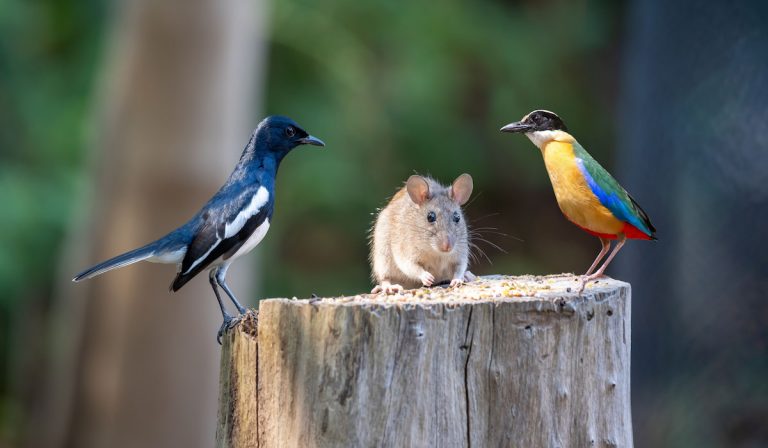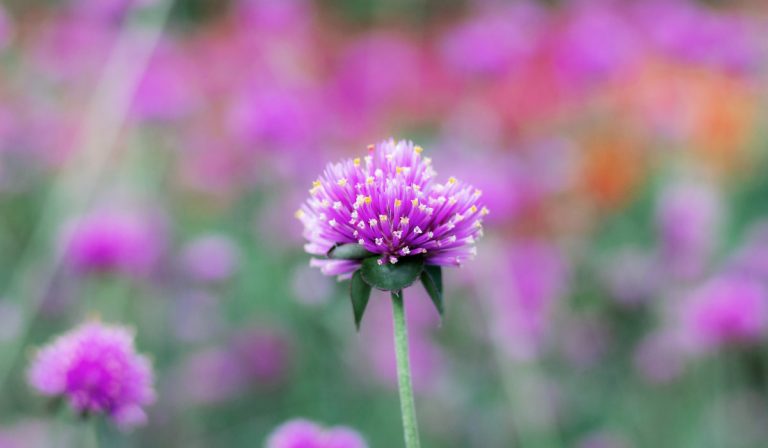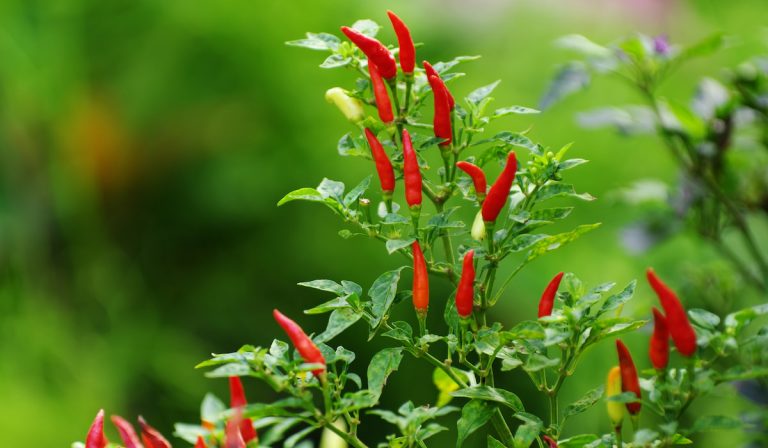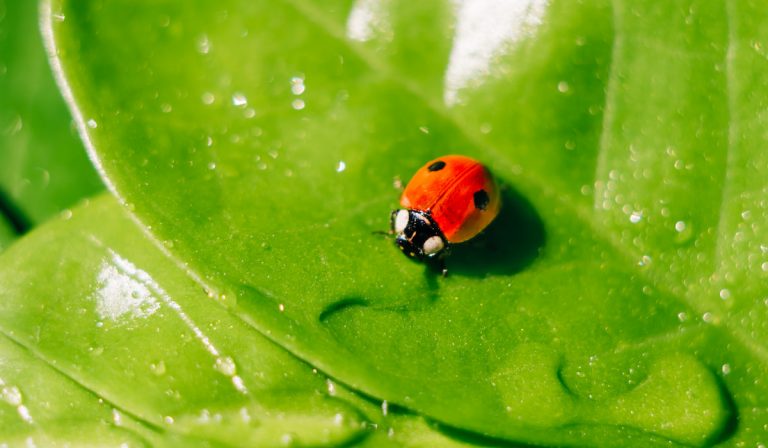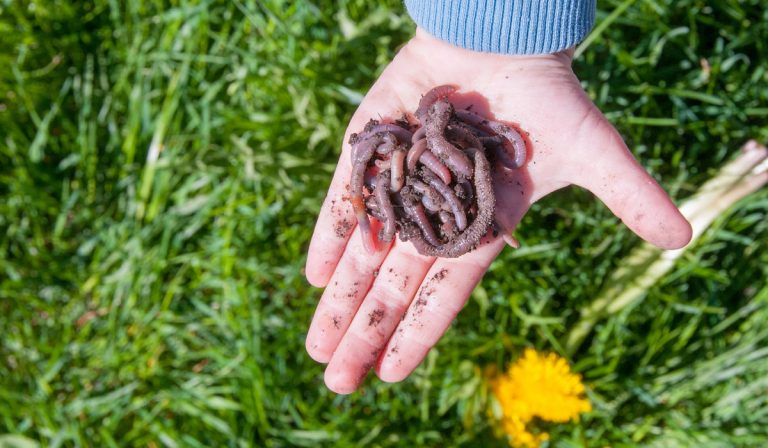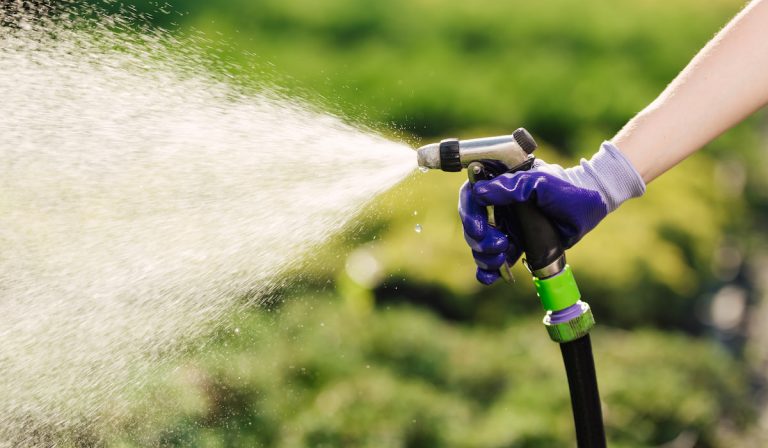Will Lamb’s Ear Grow in Shade?
Stachys byzantina, also known as lamb’s ear due to its appearance, is a perennial herb belonging to the mint family. This native Middle Eastern plant is commonly grown ornamentally because of its soft fuzzy leaves. It can reach up to 12 inches in height and is covered with dense hair or trichomes.
The leaves bud as bright green ovals and mature into silver-green leaves which can seem white also covered with thick hair. It bears small pink flowers which produce fruit, with a few flowerless exceptions. Being a low-maintenance plant it is drought tolerant as well.
This plant is an absolute necessity for tactile nursery settings, and certainly amuses kids who like to stroke the delicate leaves. While lamb’s ear is usually developed for its foliage; a few assortments are developed explicitly for their productive blossoms.
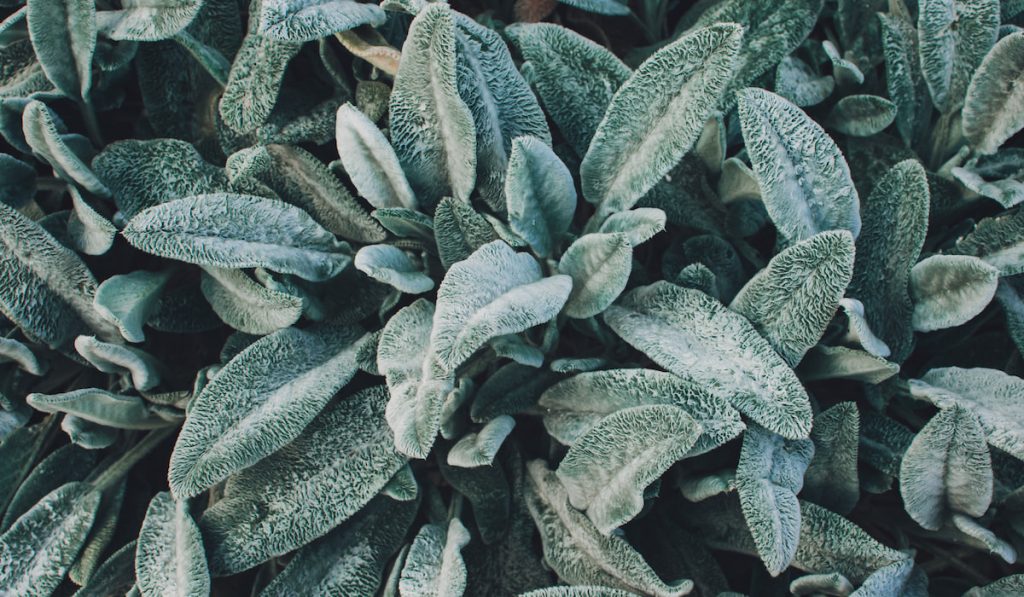
Table of Contents
In What Conditions Can Lamb’s Ear Be Grown?
However long you give appropriate conditions, growing and taking care of lamb’s ear is not that difficult. It’s strong in USDA plant toughness zones 4-8, which makes it best for filling in dry conditions. Lamb’s ear can adapt to different soil ranges.
It requires full sun or fractional shade can also be tolerated. Even though lamb’s ear can endure the most difficult of soils, it ought to consistently be well-drained as the plant despises excessively wet soil.
Lamb’s ear has many utilizations in the nursery, however, it is developed essentially for its foliage. The plant’s low-developing, mat-framing foliage makes it ideal for use as a ground cover. Plant them in open lines or compartments.
Fairly dry spell lenient, it’s likely better to water lamb’s ears very little than something over the top. Do allow it to dry out between watering sessions if conceivable. It is delicate to high moistness however will endure discontinuous moist days. Try to water these plants in the first part of the day to lessen issues with mildew.
This little plant spreads rapidly and fills in well. If you have a partially shady corner or place that is difficult to decorate then lamb’s ears will make visual allure without requiring a lot of exertion from you.
Once settled, it is somewhat self-supporting. For the most delightful-looking bed or boundary, deadhead sprouts to keep plants thick and lavish. One thing to keep in mind is that because it spreads roots effectively, it’s a good idea to watch lamb’s ears over the mid-year season.
It isn’t as obtrusive as mint, however, it will swarm out other, less powerful plants whenever it finds an opportunity. Proliferate lamb’s ears by seed or root division in spring. It self-seeds promptly.
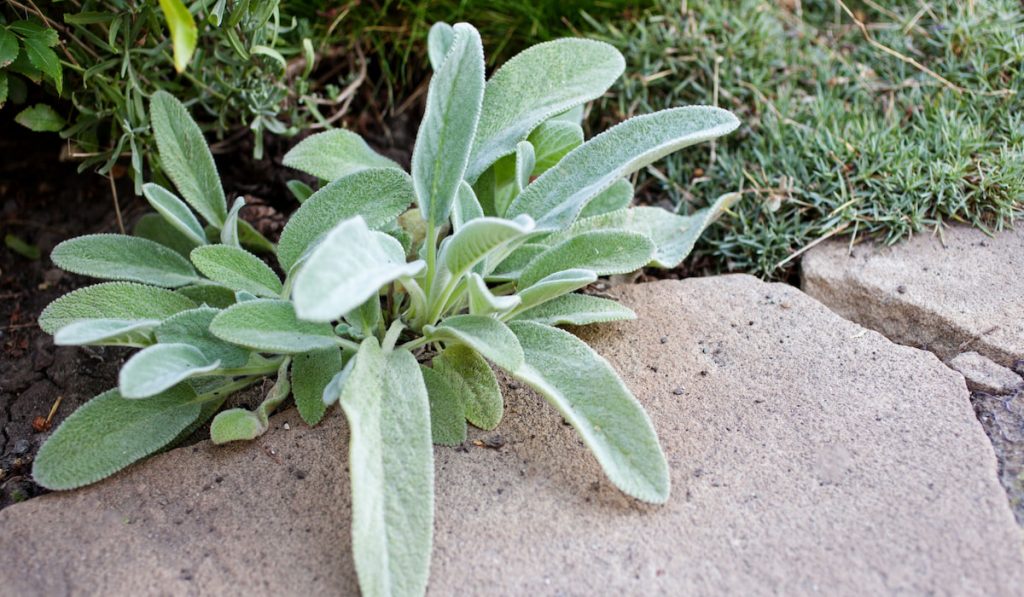
Will Lamb’s Ear Grow In Shade/ Indoor?
The best advice would be to grow the lamb’s ear outdoor. This is because of its thick leaves and woolly hair. It needs full sun but partial shade can also be tolerated. Try to position it in such a place where it gets sunshine and is also drained well.
As a result of its surprising surface and shading, lamb’s ears make a decent plant on a deck or porch. Simply grow it in a pot or container where it can be drained well and give it incomplete shade on sweltering summer evenings. You should also deadhead blossoms to hold plants back from getting messy.
You can keep up with lamb’s ears as a houseplant, yet it will require a lot of light when kept inside, so place it in the southern facing window or supplement with artificial lights. Growing light would supplement the need for sunlight and help the plant grow as normal.
Eight hours of light a day ought to be sufficient. Keep away from overwatering no matter what as root decay can be an issue. Allow plants to dry out between watering sessions.
All these things have to be kept in mind while growing lamb’s ear indoor because it requires sunlight for growing as well for drying the extra water. If these two problems are solved it can be a great indoor plant.
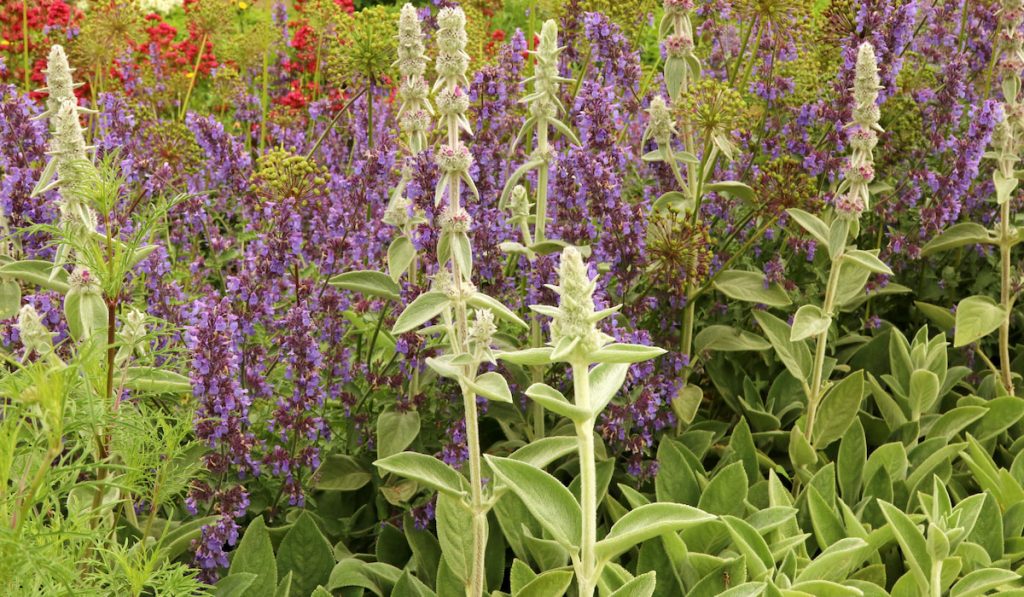
How Long Do Lamb’s, Ear Bloom?
Lamb’s ear is a notable ground-covering plant, famous for its delicate, soft foliage. The leaves are retained very late into pre-winter or winter, however, the plant isn’t as evergreen as expected, and the foliage falls ultimately to be supplanted by a new one in spring.
Plants blossom in mid-summer, and the thick shiny stems with buds are one of their important features. The blossoms are not exceptionally obvious, being tucked away among the felt. Once settled, plants can tolerate dry season, settling on this is a decent decision for a dry bright boundary or rock garden.
Lamb’s ear planting is simple and regularly happens in spring. The planting openings must be of the same size as they were in their original growing pots. To forestall crowding, space the plants somewhere around a foot apart.
Even though the lamb’s ear doesn’t need much in the method of fertilization, you can add a bit of fertilizer to the holes before planting if wanted. Water the new plants well however don’t waterlog.

5 Tips For Growing Lamb’s Ear
Once established, the lamb’s ear does not require much attention so it is not that difficult to grow. Here are a few tips to help you grow a lamb’s ear.
1. Do Not Water Too Much.
Water just when the ground is absolutely dry. Watch the foliage carefully in areas inclined to damp conditions, as this can prompt decaying. Spreading mulch under the leaves will assist with this.
2. Ensure Proper Amounts of Sunlight.
Lamb’s ear can withstand difficult soil conditions and dry season. One thing it won’t endure is wet soil. This plant performs best in full-sun conditions, yet it can withstand some shade.
Indoor, the plant will look greener, because it will create less thick hairs.
3. Trim and Prune.
Trimming is recommended in the spring season and brown leaves can be pruned whenever required.
4. Deadhead Spent Blooms.
Deadheading the spent blooms is very important, as it will keep the plant from overgrowing.
5. Do Not Let It Invade.
Keep an eye on this fast-growing plant to keep it from invading other plant’s space and keep it from spreading everywhere.


